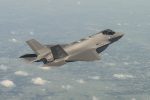As the threat of small unmanned aerial vehicles (UAVs) continues to rise in both military and civilian airspace, researchers are racing to develop efficient detection systems that can operate in real time with minimal computational overhead. A new approach leveraging reparameterized convolutional neural networks (CNNs) offers a promising solution — enabling accurate UAV detection on lightweight embedded platforms.
Reparameterized Convolutions: A Compact Yet Powerful Architecture
The research team behind this innovation — led by scholars from the University of Science and Technology of China (USTC) — focused on optimizing deep learning models for UAV detection by applying reparameterization techniques to convolutional layers. Their method transforms complex multi-branch CNN architectures into simpler single-path inference models without sacrificing accuracy.
This is achieved through a process known as structural reparameterization, which merges multiple branches (e.g., identity mappings, convolutional filters) into one during inference time. The result is a model that retains the representational power of a complex architecture but is computationally efficient enough to run on edge devices such as NVIDIA Jetson Nano or Raspberry Pi-class processors.
According to the study published in the journal Remote Sensing, their model — dubbed RepViT-UAV — achieves high precision in detecting small drones across varied backgrounds while maintaining real-time processing speeds (~30 FPS) on low-power hardware. This makes it well-suited for mobile or field-deployable counter-drone systems where size, weight, and power (SWaP) are critical constraints.
Benchmarking Against Existing Lightweight Detectors
The RepViT-UAV model was benchmarked against several state-of-the-art lightweight object detectors including YOLOv5-Nano, MobileNetV3-YOLOv4-tiny, and EfficientDet-D0. Across multiple metrics such as mean average precision (mAP), inference speed (FPS), and parameter count (model size), RepViT-UAV showed competitive or superior performance:
- mAP@0.5: Achieved over 91% accuracy across test datasets with varied lighting and environmental conditions.
- Model Size: Approximately 4.5 MB — significantly smaller than most competing models.
- Inference Speed: Maintained ~30 FPS on Jetson Nano using TensorRT acceleration.
- FLOPs: Reduced floating-point operations per second compared to YOLOv5-Nano while retaining accuracy.
This balance between computational efficiency and detection fidelity is crucial for tactical applications such as forward-deployed sensor nodes or mobile security patrols where traditional GPU-heavy solutions are impractical.
Tactical Implications for Counter-UAV Operations
The proliferation of commercial drones in conflict zones — from surveillance quadcopters to explosive-laden FPVs — has made low-SWaP counter-UAS solutions a top priority for military forces worldwide. Traditional radar or optical tracking systems often struggle with small RCS targets or require high-end processing backends unsuitable for mobile deployment.
The RepViT-UAV’s ability to operate autonomously on embedded platforms opens new possibilities for decentralized drone defense architectures:
- Tactical Edge Nodes: Deployable sensors along borders or perimeters that detect incursions without centralized processing hubs.
- Dismounted Troop Kits: Helmet- or rifle-mounted sensors providing live drone alerts during infantry operations.
- Civilian Infrastructure Protection: Portable units securing airports, stadiums, or energy facilities from rogue drones without needing full-scale C2 infrastructure.
This aligns with broader trends in layered C-UAS strategies where passive EO/IR sensing complements active RF jamming or kinetic interceptors like SkyWall or DroneGun Tactical systems.
Synthetic Datasets and Training Methodology
A key innovation in this project was the use of synthetic training data generated via domain randomization techniques. Since collecting large-scale labeled datasets of UAVs under diverse conditions is challenging, the team created photorealistic simulations using Blender-based rendering pipelines combined with real-world backgrounds captured via DSLR cameras and drones themselves.
This allowed them to train robust models capable of generalizing across different drone types (quadcopters vs fixed-wing), altitudes, occlusion levels, and lighting scenarios. The dataset included over 50K annotated images covering more than ten classes of commercial UAVs including DJI Phantom series, Parrot Anafi, and racing drones commonly seen in asymmetric warfare theaters like Ukraine or Syria.
Toward Integration With Broader ISR Architectures
The modularity of RepViT-UAV makes it suitable not only as a standalone detector but also as part of integrated ISR networks. It can feed target coordinates into higher-level fusion systems combining radar tracks, acoustic signatures, RF emissions analysis (e.g., DJI protocol sniffing), and even AI-enabled kill-chain automation tools like Anduril’s Lattice OS or Rafael’s Drone Dome C4I suite.
This type of plug-and-play capability is increasingly vital as NATO-aligned forces seek interoperable sensor fusion layers under STANAG-compliant frameworks like Link-16/22 or MIDS-JTRS terminals. Moreover, its open-source TensorRT implementation facilitates rapid prototyping by allied defense labs seeking sovereign C-UAS capabilities without vendor lock-in from proprietary OEM stacks.










